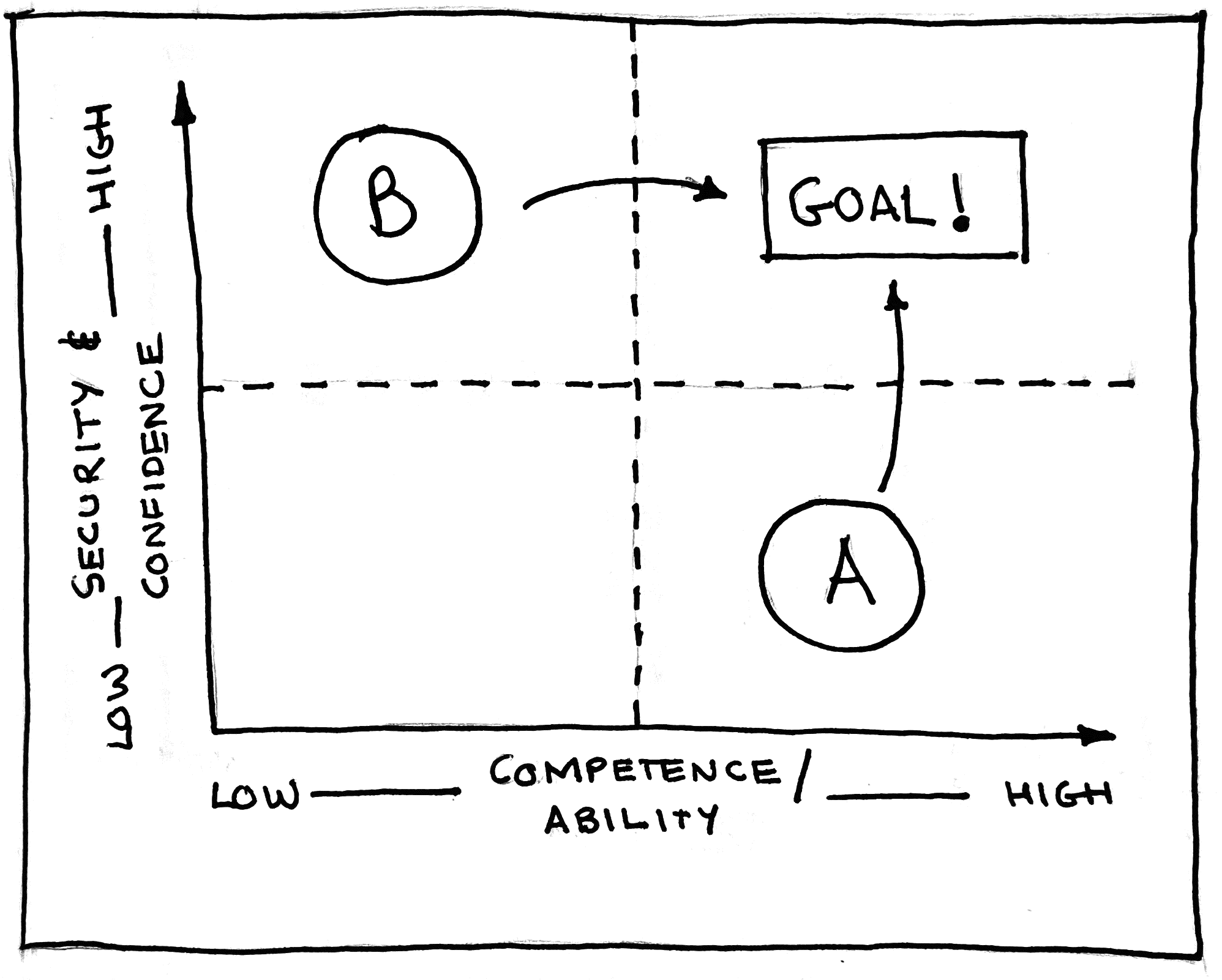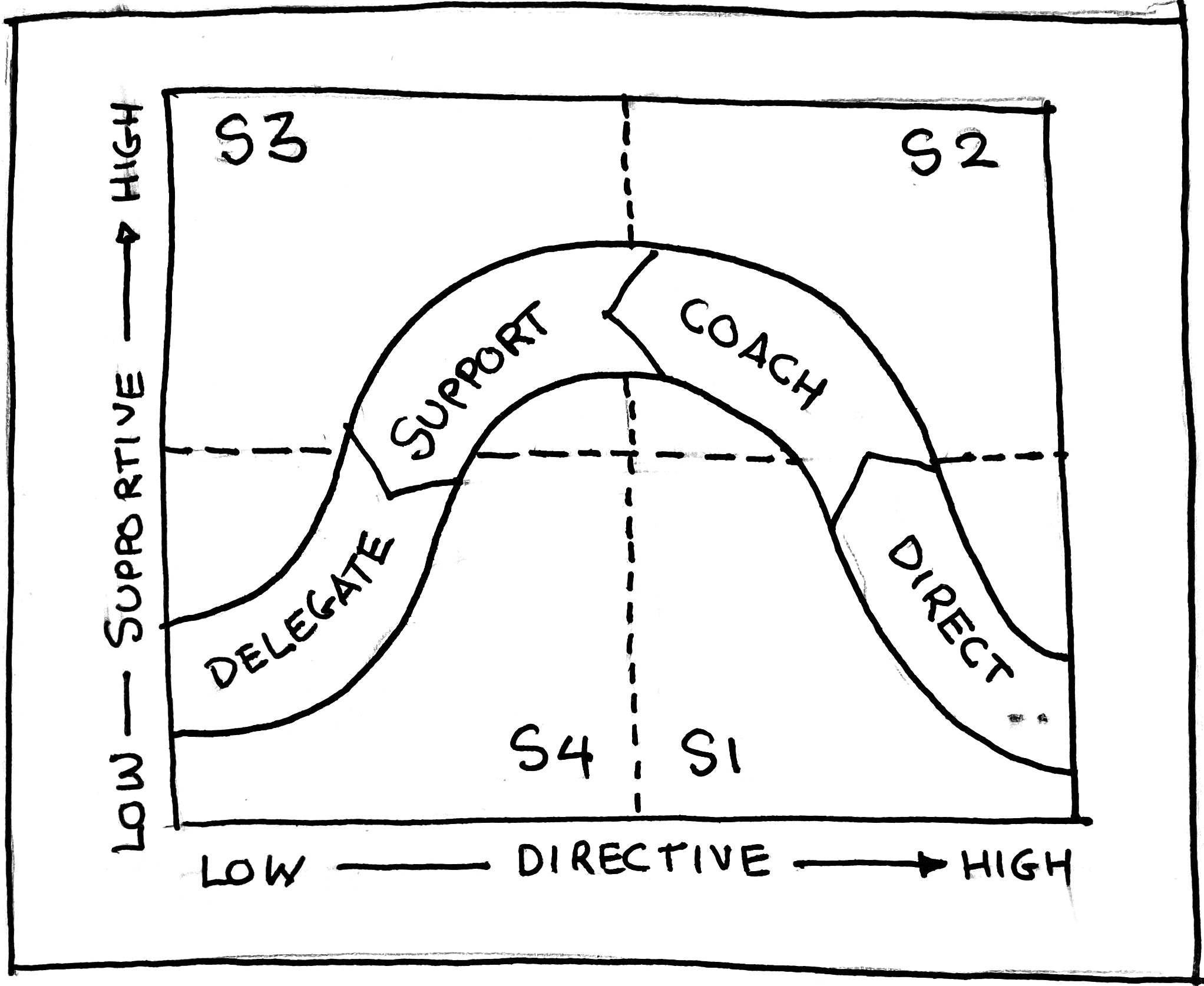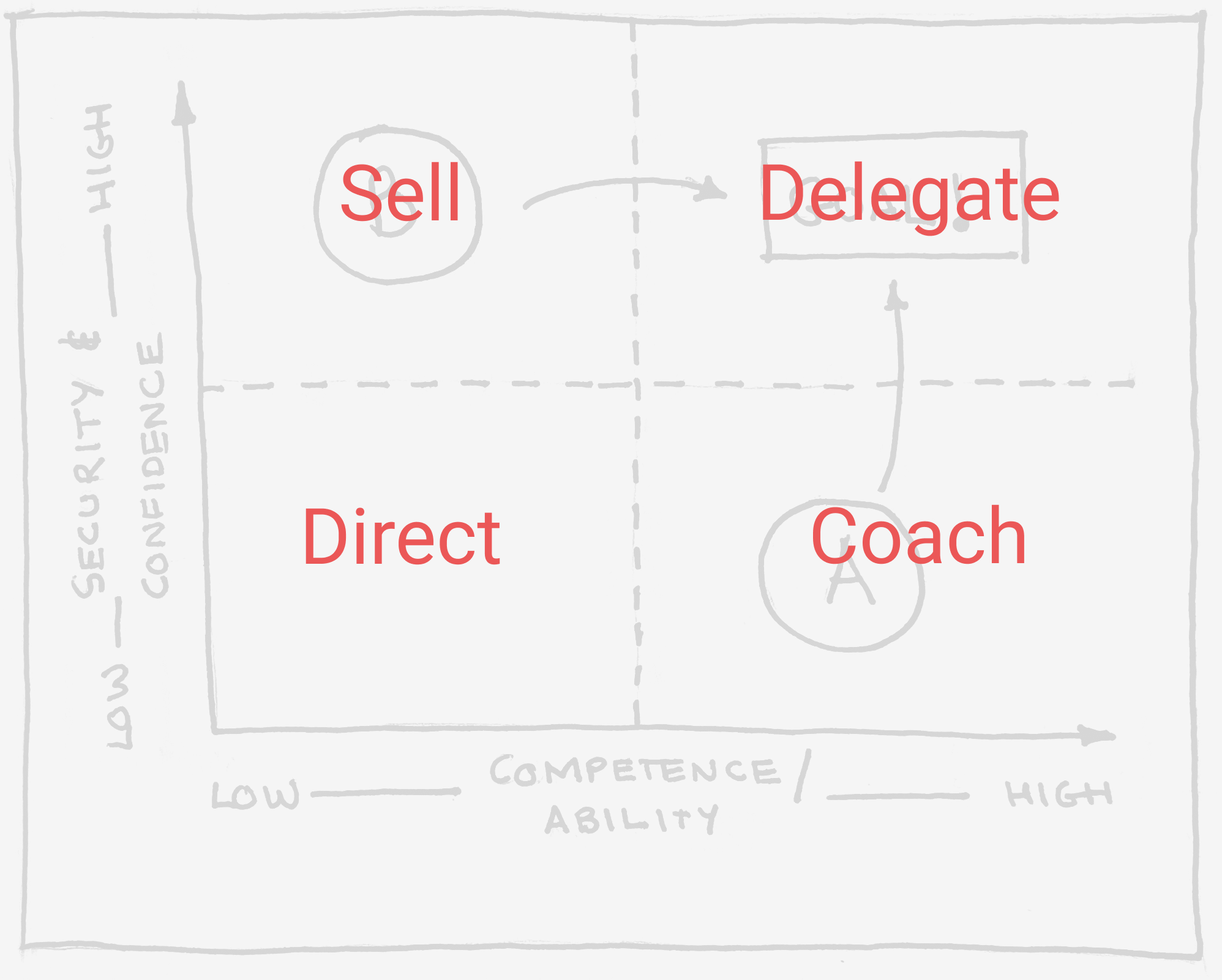Situational Leadership
A Most Useful Management Framework
Management books are full of different leadership and management frameworks and advice. A lot of these use contrived examples and war stories that are hard to replicate. Over the course of a decade of managing engineering teams, I have found Situational Leadership to be the one framework that applies to a broad range of scenarios, is practical enough to be easily understood and applicable, and tremendously valuable once you know it.
Life at FizzBuzz.co
Amy and Bob are two engineers on the FizzBuzz team, building the next great feature your product needs. Amy thinks deeply about the underlying data structures and problems; Bob is a front-end ninja.
However, managing them is rather challenging. Amy often feels like things are a bit too easy; her output is variable; you think she might be unmotivated. There is no shortage of work, but she hesitates to pick up new work before asking you.
Bob, on the other hand, is really into FizzBuzz. He was so into the product that he applied to join your company out of school and couldn’t wait to get started. Bob works hard but often gets stuck on things. Even worse, the quality of his code can be variable - he makes bad architectural calls, copy-pastes when he shouldn’t, and doesn’t test enough.
What should you do?
Employee Behaviors
Amy and Bob are two different engineers; they need different approaches to being managed. What are some specific things you can do to make them both individually successful?
The underlying core thesis behind Situational Leadership is the solution to this problem.
We can segment the engineers along two axes - ability/competence and willingness/confidence/security. Depending on where they are in their journey, you can use different techniques to help them. This theory is not new. Ken Blanchard and Spencer Johnson wrote about this in One Minute Manager, first published in 1982.
Note: My 2x2 is slightly different from what you’ll find by Google searching situational leadership. I’ll explain the traditional model below and why I prefer to start with the people view rather than the manager view.
In our case, Bob seems highly motivated and excited about his work. But he may not be able to do the work - he just joined FizzBuzz out of school, and this is his first job.
Amy, on the other hand, is highly skilled. She can knock stuff out at will, and produce high-quality products. She may lack the confidence or the motivation to get her work done and be the independent rockstar you know she can be.
In other words, the picture that emerges is something like this:

Our goal is to get both Amy and Bob to be high performing engineers - who are highly competent, motivated, and self-directed.
How do we get there?
Manager Behaviors
How should our behavior change when working with Amy or Bob taking into account their different stages? We can think of leadership on two axes (surprise!): Supportive and Directive.
Highly directive leadership is mostly “Do this, in this way, by this time.” There is no autonomy and little opportunity to be creative. The opposite is complete autonomy: the freedom to pick problems, priorities, solutions, and timelines.
Highly supportive leadership is akin to being a great coach. You give feedback. You ask hard questions. They can come to you when they are stuck or need to problem solve. The opposite is being left entirely alone: engineers solve their problems, and the results are the feedback (did the product succeed?).

Bringing It All Together
Now we a rubric for helping Amy and Bob.
In Amy’s case, we need to Sell (S3 in situational leadership parlance) - give her the confidence to take on more and more challenging tasks, encourage her to seek out problems, to go after things she thinks are essential without having to check back with us. We still need to give her feedback to both help her grow and increase her confidence and security. But in no case should we micromanage her or give her task-specific direction.
For Bob, we need to be more directive (S2 in situational leadership parlance). Some might interpret this as micro-management, and that’s okay. But Bob needs a tight feedback loop and smaller, lower complexity tasks. As Bob grows in his ability, he will graduate to more challenging projects while maintaining a high level of quality and delivery.

Where does it all go?
The end goal is to get to Delegation holy land.
Doesn’t that put the manager out of a job? Yes! That’s the whole point - build enough leverage and capacity on your team that you don’t actually have to do anything - and then grow the team or seek other challenges.
In delegation mode, the manager is both low directive and low supportive. They are not giving the employees direction or feedback. Does that sound bad? Every CEO, every leader of a sizeable organizational unit, every person who is out on their own lives in this mode. If the employee is so good that they need no management, they are ready to take over your job!

Errata
One Minute Manager might have been plagiarized from Arthur Carlisle’s work in MacGregor.
{% include about.md %}